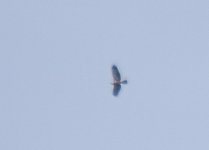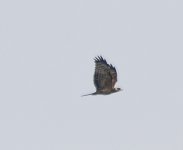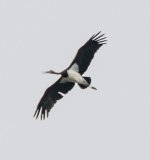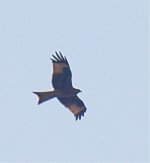> I've had a look at the literature and it certainly is surprising, in that in autumn, the STEs from the south of Italy also go north, against the flow of other migrants, turning west to France and heading for Gibraltar. You may have known this already.
There is also an unexplained and considerable number of young birds overwintering in Sicily. One paper mentions them attempting to carry on (groups of some tens seen on the island of Marettimo, which is 130km from Cap Bon, Tunisia), but then settling for the winter on Sicily. So these are immatures, and in the spring/summer period, they go back and forth between Sicily and the Italian peninsula.
In one study of 7 juveniles fitted with GPS before they fledged, 5 went the circuitous route via France. Two somehow did not, overwintered in Sicily, then came back in spring to mainland Italy. One sadly got poached near Messina, the other the following autumn learnt the north to west route, reached Spain, and there got shot.
It seems STEs are even more averse to long sea crossings than HBs, flapping flight is too costly for them. Thus their choice of a circuitous route which often nearly doubles the kilometrage between summer and wintering grounds.
The theory is that STEs are 'colonizing' Italy from the west, it is an evolving situation. This may explain why they come down the peninsula, some all the way to southern Italy, and return the way they came. Hope I've got that more or less right! You'll find lots of papers, by Panuccio, Agostini, Premuda, Mellone.







